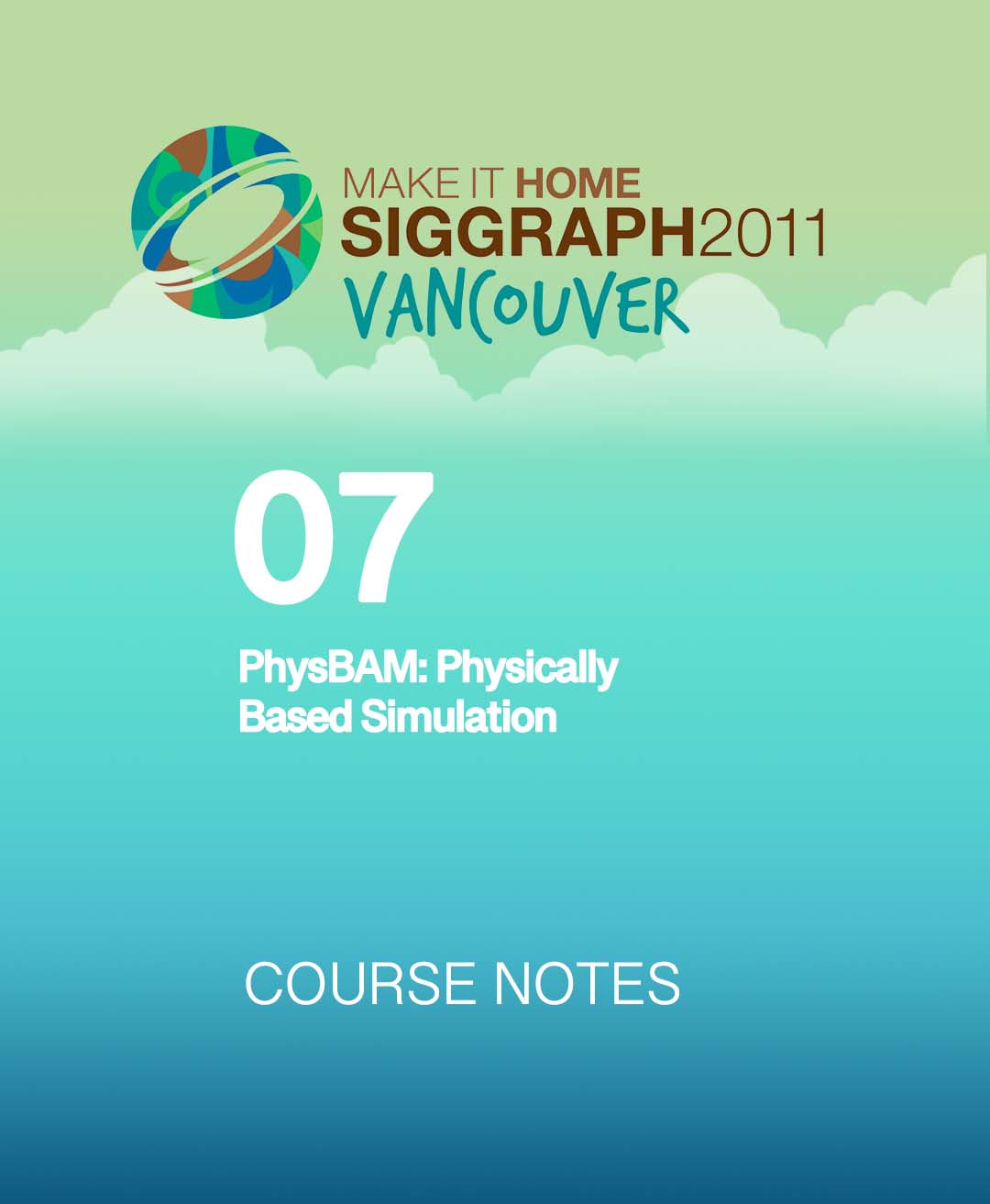“PhysBAM: Physically Based Simulation” by Dubey, Hanrahan, Fedkiw, Lentine and Schroeder
Conference:
Type(s):
Entry Number: 07
Title:
- PhysBAM: Physically Based Simulation
Course Organizer(s):
Presenter(s)/Author(s):
Abstract:
Prerequisites
Basic knowledge of numerical methods and simulation.
Intended Audience
Attendees who want to learn more about fluid simulation, level sets, and the soon-to-be-released simulation library PhysBAM.
Description
This course is an introduction to the PhysBAM simulation library developed at Stanford University and used in both academic and industrial settings, including Intel Corporation, Industrial Light & Magic, Walt Disney Animation Studios, and Pixar Animation Studios. The course contains information on the release of PhysBAM as well as information on how to obtain the source code, set up the library, and use it to run example smoke and water simulations. It also summarizes a visualization tool and a rendering tool included in the release of the library. Physically based simulation is a vital part of the special-effects toolkit. Traditionally, special effects are obtained by constructing scale or full-size models, whether the scene calls for a sinking ship or a burning building. Unfortunately, this is very expensive and at times not feasible. Physical simulation is also used for special effects in animated films, where traditional special effects methods cannot easily be applied. And it is increasingly used in the gaming community as enhanced processing power enables simulations to occur at real-time rates. In addition to the PhysBAM library, the course explains the underlying techniques that make these simulations possible, in particular level set methods such as fast marching, fast sweeping, and the particle level set method. It also addresses the important aspects of a fluid simulation, including advection, viscosity, and projection.




